Abstract
Taylor, P. J., and Pocock, S. J. (1972).Brit. J. industr. Med.,29, 201-207. Mortality of shift and day workers 1956-68. Little research has been reported about the long-term effects of shift work. An investigation is described on 8 603 male manual workers from 10 organizations in England and Wales designed to assess the mortality experience of day, shift, and ex-shift workers. Three major types of shift system were involved. All had been employed by the same organization for not less than 10 years and the follow-up period was between 1956 and 1968. Only 22 men could not be completely traced and the cause of death was obtained for all but eight of the 1 578 deaths. Man-years at risk for each group were calculated in order to compare observed deaths with those expected from national mortality rates. The overall number of deaths was very close to that expected and no significant excess mortality was found in either the shift or ex-shift groups. Shift workers in some age groups had higher mortality than expected but this was not consistent between either organizations or types of shift work. A study of 14 main causes of death revealed some differences from national experience in both day and shift workers but these can be attributed to regional and occupational differences. To eliminate any occupational factor the mortality of skilled craftsmen and their mates was compared for day and shift work with no evidence of any shift work effect. The results lead to the conclusion that shift work would appear to have no adverse effect upon mortality.
Full text
PDF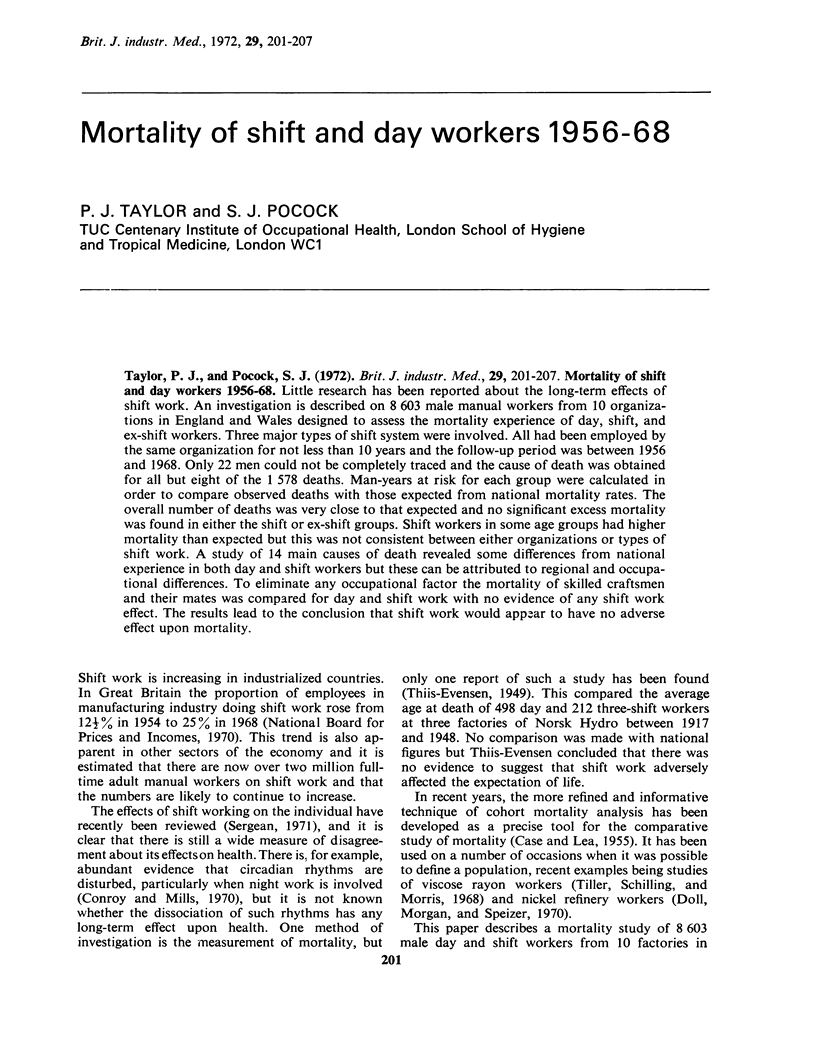
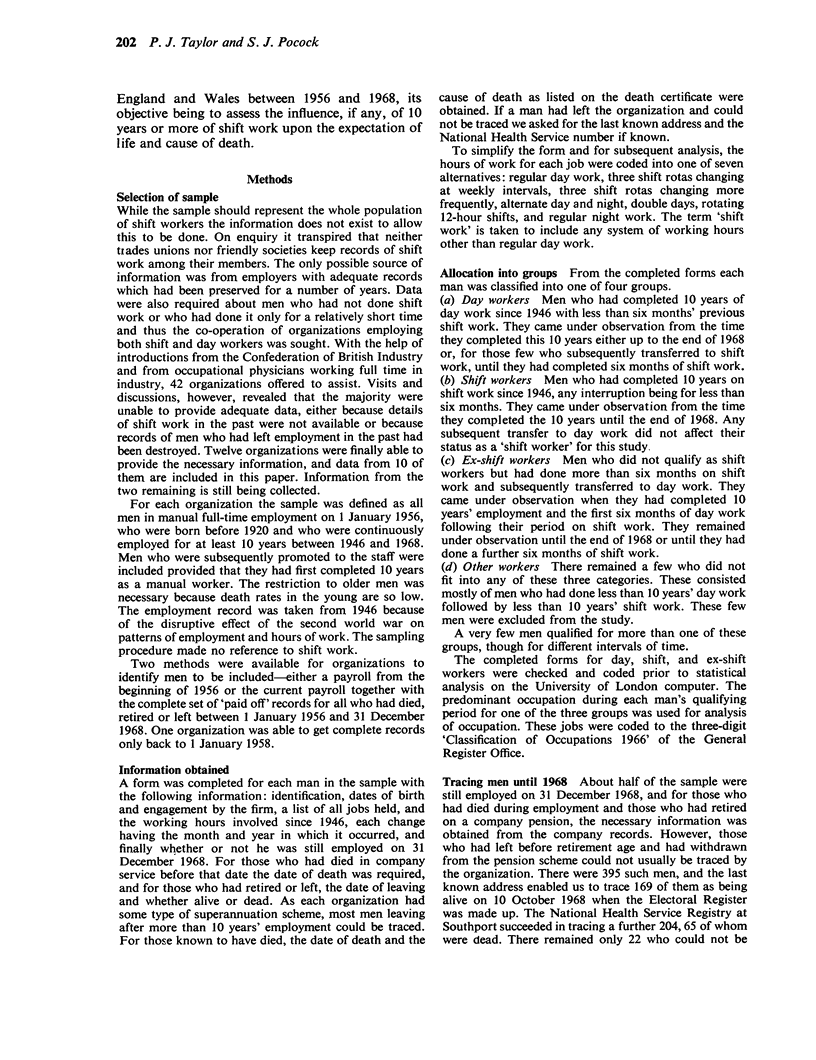
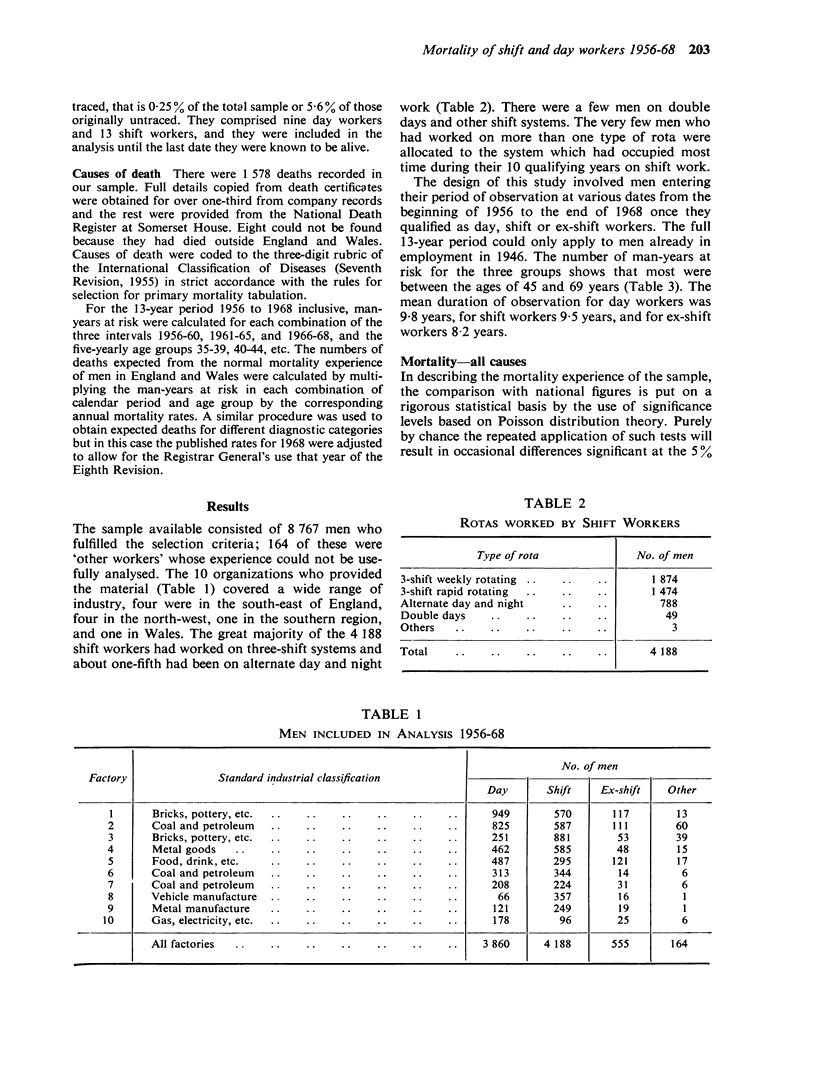
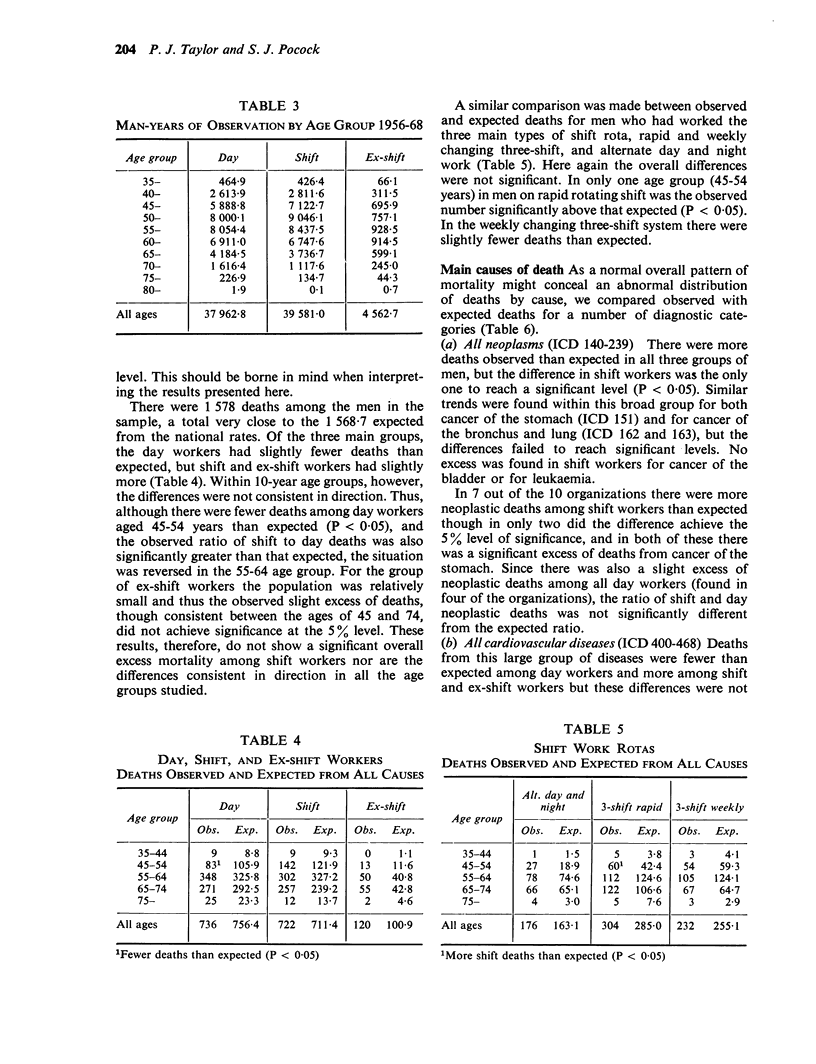
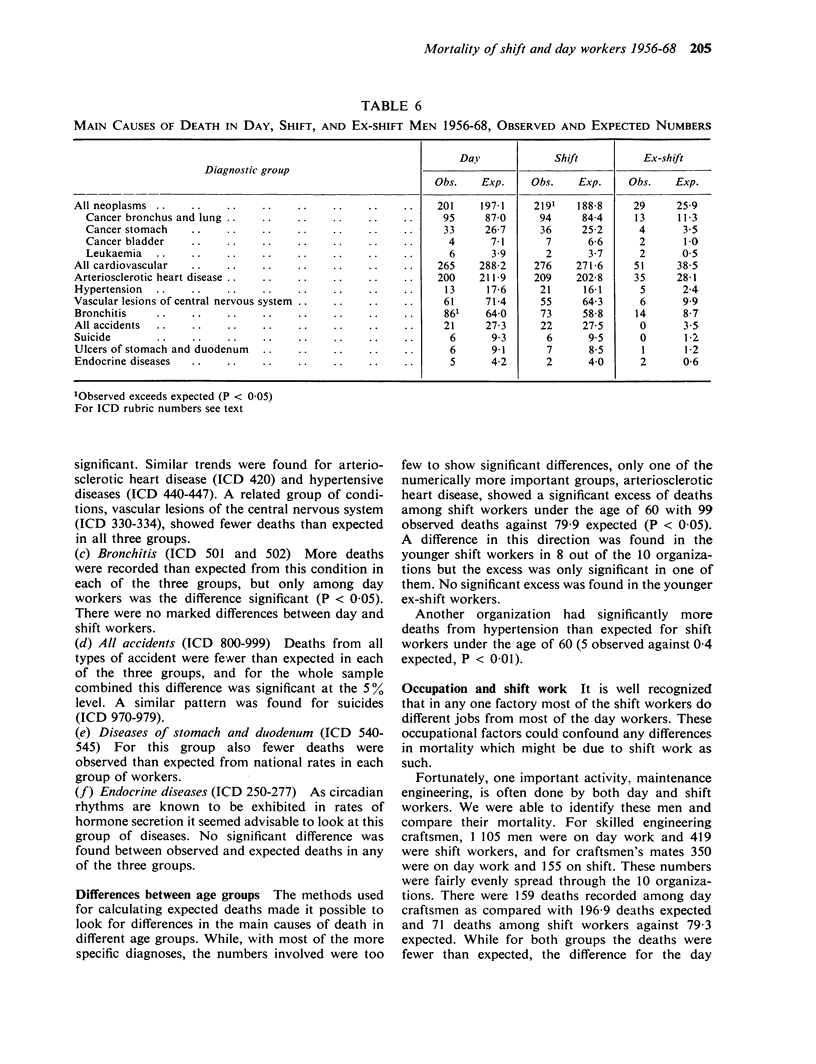
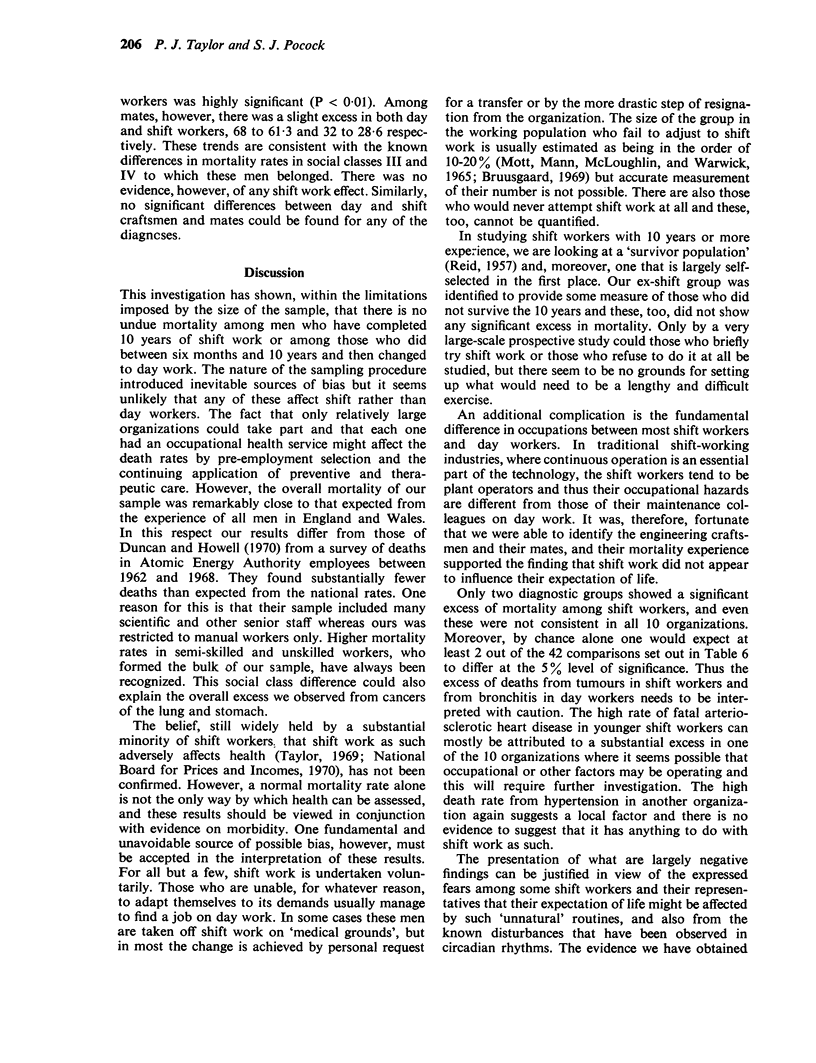
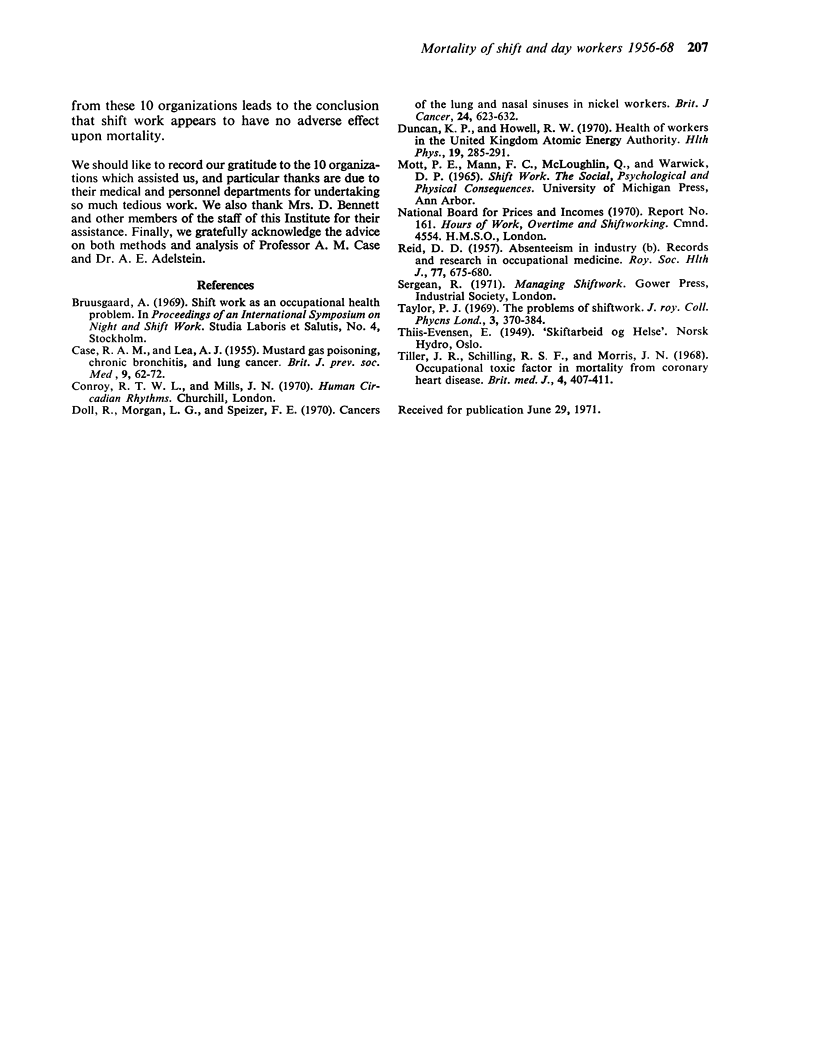
Selected References
These references are in PubMed. This may not be the complete list of references from this article.
- CASE R. A., LEA A. J. Mustard gas poisoning, chronic bronchitis, and lung cancer; an investigation into the possibility that poisoning by mustard gas in the 1914-18 war might be a factor in the production of neoplasia. Br J Prev Soc Med. 1955 Apr;9(2):62–72. doi: 10.1136/jech.9.2.62. [DOI] [PMC free article] [PubMed] [Google Scholar]
- Doll R., Morgan L. G., Speizer F. E. Cancers of the lung and nasal sinuses in nickel workers. Br J Cancer. 1970 Dec;24(4):623–632. doi: 10.1038/bjc.1970.76. [DOI] [PMC free article] [PubMed] [Google Scholar]
- Duncan K. P., Howell R. W. Health workers in the United Kingdom Atomic Energy Authority. Health Phys. 1970 Aug;19(2):285–291. doi: 10.1097/00004032-197008000-00007. [DOI] [PubMed] [Google Scholar]
- REID D. D. Absenteeism in industry. B. Records & research in occupational medicine. R Soc Health J. 1957 Oct;77(10):675–680. doi: 10.1177/146642405707701013. [DOI] [PubMed] [Google Scholar]
- Tiller J. R., Schilling R. S., Morris J. N. Occupational toxic factor in mortality from coronary heart disease. Br Med J. 1968 Nov 16;4(5628):407–411. doi: 10.1136/bmj.4.5628.407. [DOI] [PMC free article] [PubMed] [Google Scholar]


